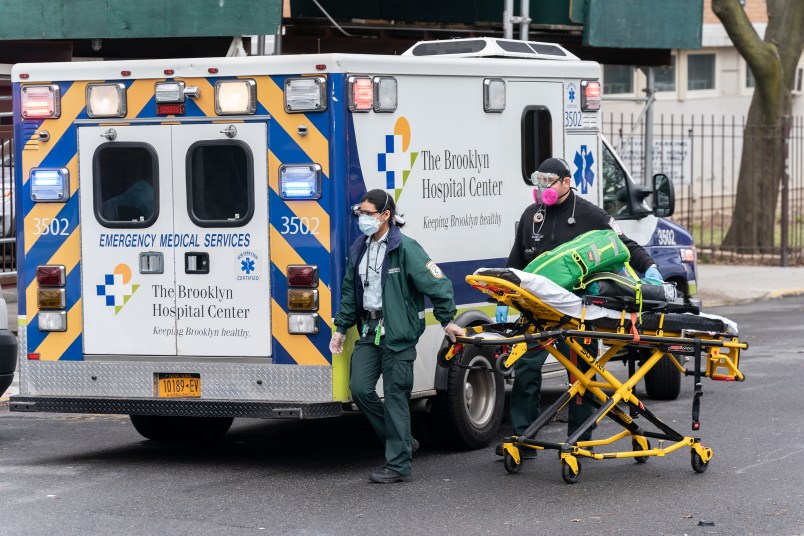New Yorkers in nursing homes, long-term care facilities and hospices are dying of COVID-19 at rates far beyond what testing has shown, new data from the city indicates.
Just 292 people who died in these facilities had undergone tests and been confirmed as coronavirus carriers, or 4.8% of the total deaths resulting from confirmed cases of the disease.
But according to the city, a staggering 673 New Yorkers with unconfirmed but “probable” COVID-19 cases died in nursing homes, long-term care and hospice settings — a full 17.8% of deaths from these “probable” cases.
Put another way: 70% of New Yorkers who died of COVID-19 in nursing homes and other long-term care settings never actually tested positive for the disease.
“It’s an awful thing,” said Don Shulman, President and CEO of the Association of Jewish Aging Services, whose member facilities Shulman said are home to more than 10,000 people in New York City.
“The morbidity is real, and it’s going to continue.”
The data represent the disease’s uncounted toll on elder care facilities in the city, a trend represented in other COVID-19 hotspots around the world where the disease’s impact on the elderly, especially those living in communal settings, has been dramatic.
Before Tuesday, New York City — like most state and local governments nationwide, as well as the CDC — did not publish numbers on unconfirmed but probable COVID-19 deaths in its total count of fatalities from the disease.
But after reporting on data from the fire department and city medical examiner’s office showed that lab-confirmed cases represented just a fraction of COVID-19 deaths, the city released data on “probable” deaths from the disease.
Nearly 3,800 New Yorkers who had not been confirmed carriers of the virus nonetheless likely died of COVID-19 since March, according to the newly released data.
According to a press release accompanying New York’s “probable” death data Tuesday, the term defines decedents who had no known positive laboratory test for COVID-19, but whose “death certificate lists as a cause of death ‘COVID-19’ or an equivalent.” Gothamist first reported last week that the city would begin reporting these “probable” figures
Shulman said the virus has hit nursing homes and other long-term care facilities on multiple fronts. Not only are residents more susceptible, but sick staff members have had to stay home from work, leaving the remaining workforce short-staffed.
“Residents are isolated in their rooms, which is not a healthy situation,” he said. “Activities are somewhat limited and difficult.”
Testing, though limited, has been concentrated in hospitals: More than twice the number of New Yorkers who died in hospitals had tested positive for COVID-19 than those who died in hospitals without having tested positive for the disease, according to the city’s data.
In nursing homes and among at-home decedents, another poorly tested group, the opposite was clear: The vast majority of COVID-19 deaths occurred among people who had not actually tested positive for the disease.
“Obviously, and rightly so, a lot of attention has been placed on the acute care side of things,” Shulman said. “I think more attention needs to placed on the long-term care side of things.”
Gothamist on Tuesday quoted an unnamed nurse at Fairview Rehab & Nursing Home who said the facility had run out of room to properly store bodies in recent weeks.
“The ones who died here were not tested,” the nurse said. “We know it’s because of the virus because it’s people who’ve been here for years who suddenly cannot breathe. They die very quickly.”
Read through the city data released Tuesday below:



